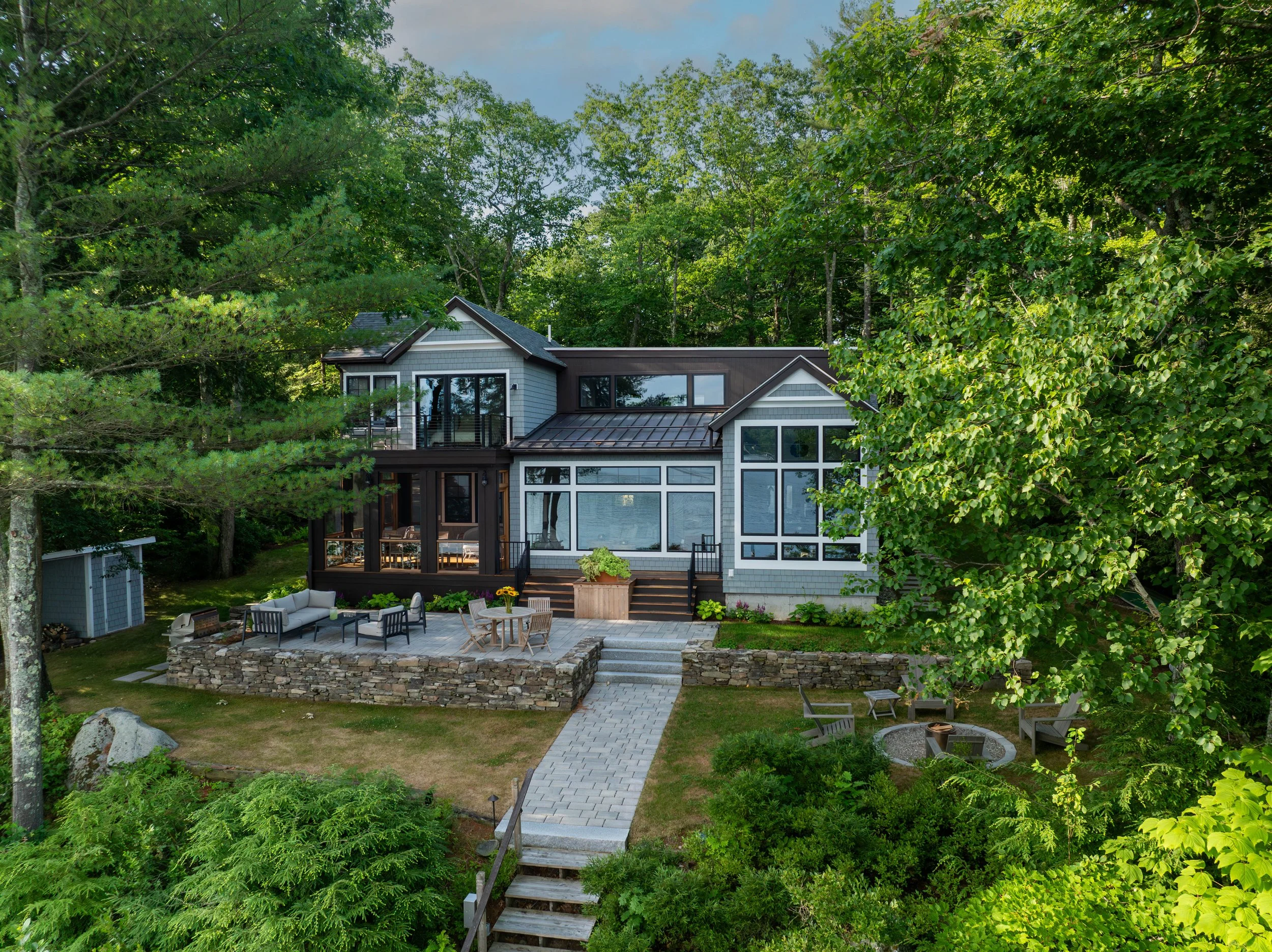When building in New Hampshire, it's important to consider stormwater management for your property. With all the state's hills, lakes, and wooded lots, a sudden downpour can send hefty amounts of water rushing across your land. Managing that runoff in a smart, sustainable way helps protect your home, the surrounding landscape, and nearby lakes and streams.
When rain falls or snow melts, the water doesn’t always soak into the ground. Instead, it runs off roofs, driveways, patios, and other hard surfaces, picking up pollutants along the way. That runoff often ends up in local water bodies, contributing to erosion and affecting water quality. In a state like New Hampshire, where many homes are near shorelines and wetlands, managing stormwater is an essential part of responsible building.
Ways to Manage Stormwater on Your Property
Minimize Hard Surfaces
Whenever possible, try to limit the amount of pavement or concrete. Using gravel, permeable pavers, or crushed stone paths allows water to soak into the ground instead of running off.
Work with the Land, Not Against It
Every property is unique, and designing your site plan around the natural slope, vegetation, and drainage patterns can make a tremendous difference. Trees, shrubs, and natural contours help slow down water and absorb it before it becomes runoff.
Consider Rain Gardens and Swales
Rain gardens are shallow, planted areas that catch runoff from roofs or driveways, allowing it to soak into the soil. Swales work similarly but are shaped more like a ditch, often lined with grass or native plants. Both design features help slow and filter stormwater naturally.
Collect Roof Runoff
Rain barrels and cisterns are great for capturing rainwater from your roof. Not only does this reduce runoff, but it also provides a free water source for your plants.
Use Dry Wells or Infiltration Trenches
These below-ground systems collect water and slowly release it into the soil. They’re especially useful for directing water away from foundations or driveways.
Start Planning Early
Stormwater regulations vary depending on where you're building, especially near shorelines or in areas with a high-water table. Consulting a landscape architect, civil engineer or local designer early in the process can help you plan more effectively and avoid costly delays down the road.

